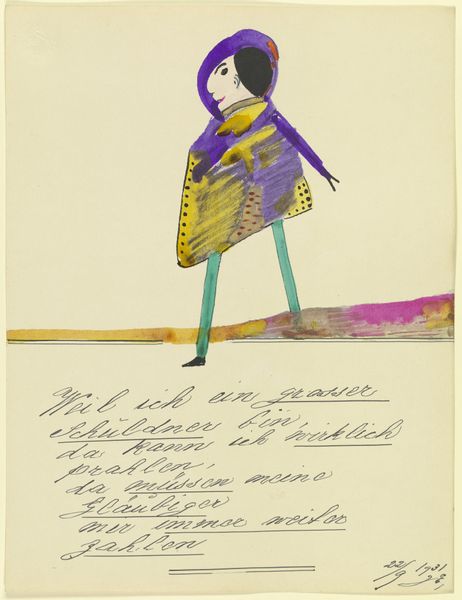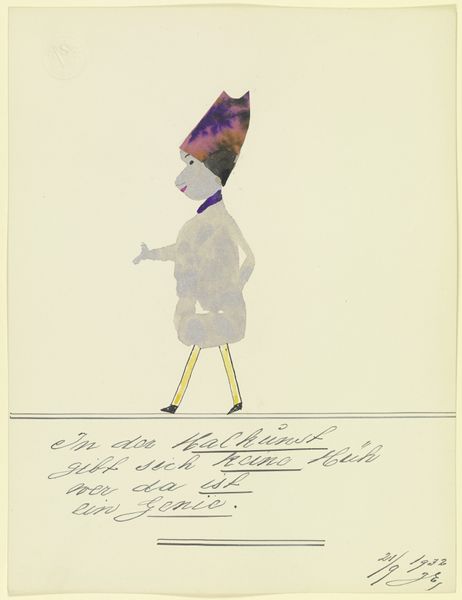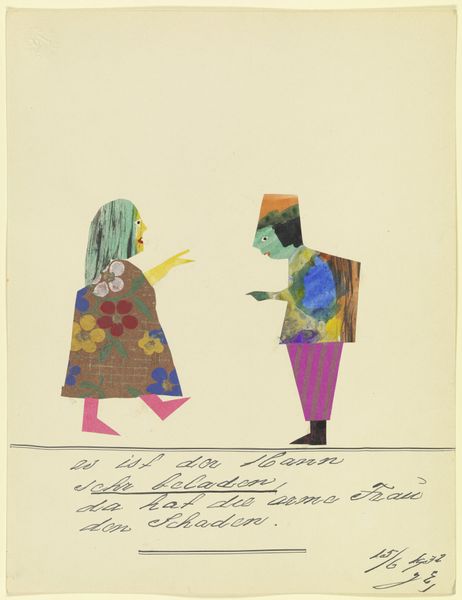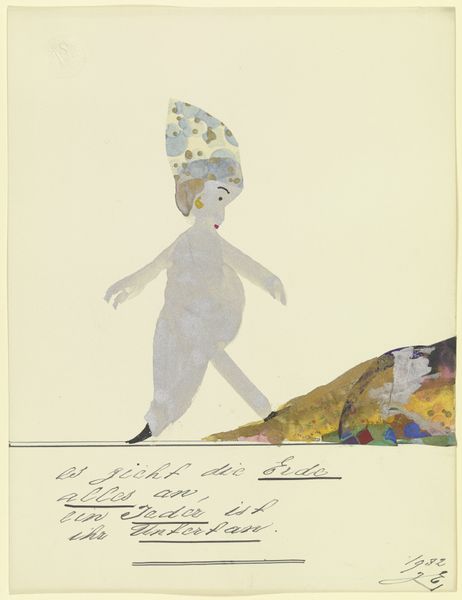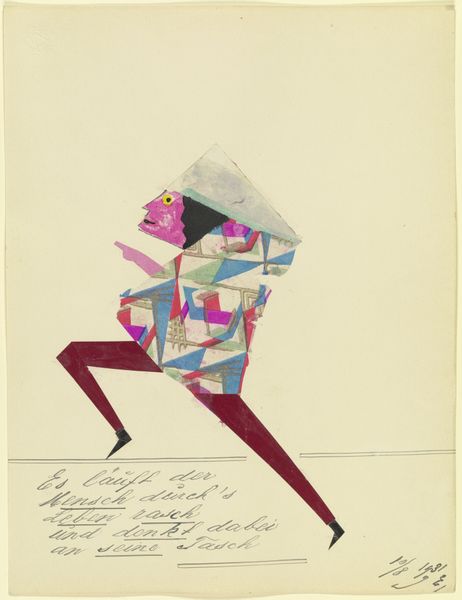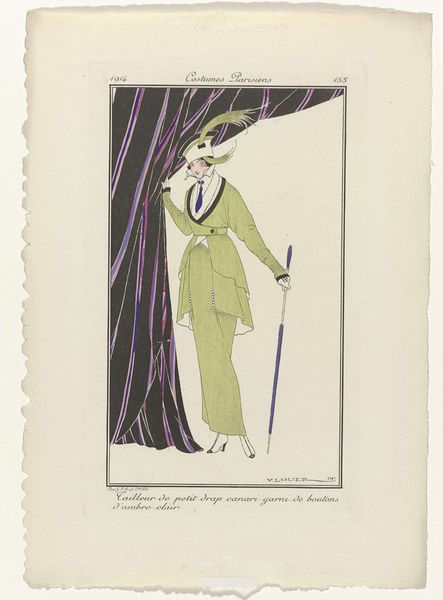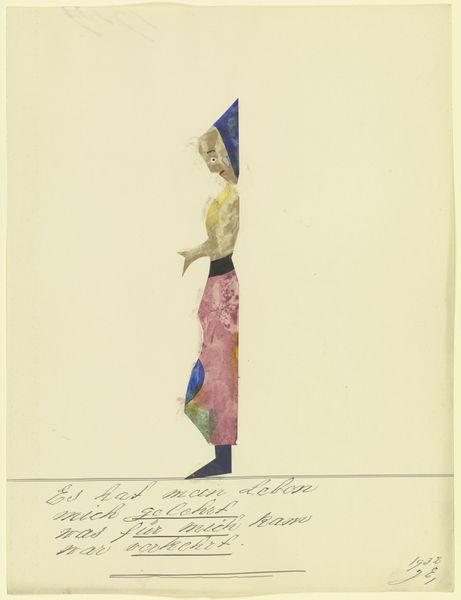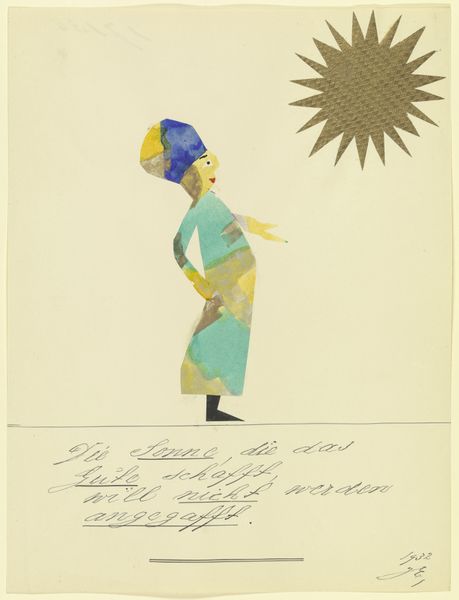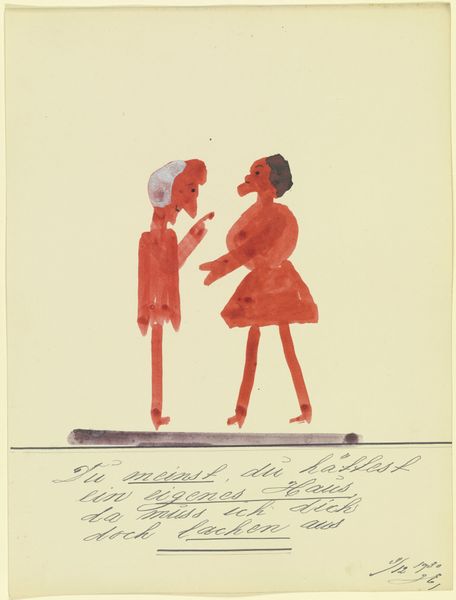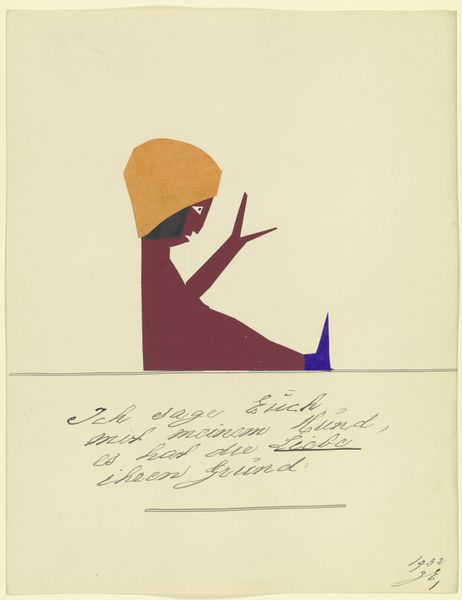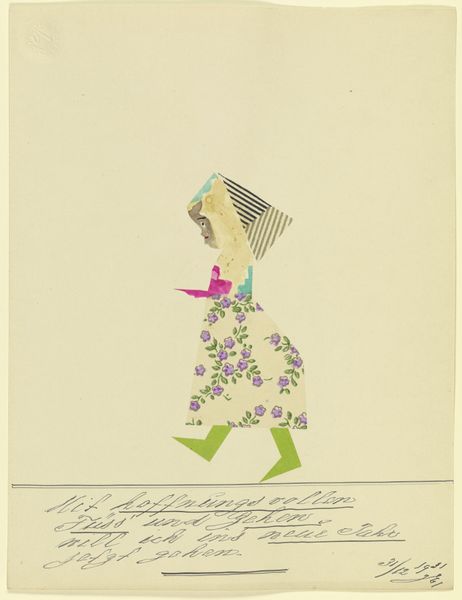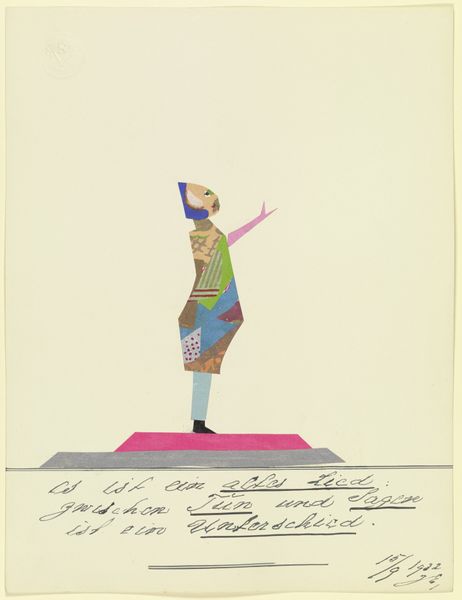
Copyright: Public Domain
Curator: Let's discuss John Elsas's intriguing artwork, "17422 (_She was a byre woman…_)", dating back to 1932. It’s a striking collage, drawing, and gouache piece with ink on paper, currently residing here at the Städel Museum. Editor: Okay, wow. Immediately, I'm getting a sense of… displacement? She looks like a fractured fairy tale character. The disjointed shapes, that almost violent assembly of textures – it's strangely captivating. Curator: Indeed. Elsas created this within the historical context of the Weimar Republic, a period rife with social and economic anxieties, with growing class disparities, just before the rise of the Nazi regime. These tensions undoubtedly influenced his artistic vision. The byre woman—a simple dairymaid—is re-imagined through an expressionistic, almost caricatured lens, speaking, perhaps, to the exploitation of labor and gender. Editor: Caricature is spot on! Look at the disproportion, that impossibly pointy chin! It’s poking fun, but there’s also something… compassionate? It’s like he sees the humor and the hardship all tangled up together. Is that her in traditional garb? Or just scraps of pattern mimicking the idea of rural dress? Curator: The collage elements create a fragmented identity, layering various textures and patterns to symbolize the multifaceted nature of her role, the collision of rural tradition and the burgeoning industrial world. It's also essential to consider the implications of portraying working-class women, as often this reflects not only a personal history but a microcosm of wider socio-political anxieties regarding gender, class, and rural-urban migration. Editor: Absolutely. She's pieced together, literally, from fragments of the culture surrounding her. I’m particularly drawn to how the muted gouache offsets those sharper ink lines. It's melancholic but… assertive. You wouldn’t mess with this dairymaid. Curator: The handwritten German text beneath adds another layer. "Sie war Kühmagd, früher gewesen; heut zählt sie laut zu den Baronösen", translates to "She was a dairymaid, formerly; today she loudly counts herself among the Baronesses." This raises critical questions about social mobility, performance, and perhaps a veiled critique of class structures. Editor: Ah, the power dynamic shifts. Intriguing. So much contained in such deceptively simple shapes. I walked in thinking whimsical collage, and now I’m chewing on social commentary. Curator: Precisely. Elsas prompts us to delve beneath the surface of what seems, at first glance, like mere caricature. Editor: It’s those multiple layers—visual, textual, historical—that resonate the most, leaving you both amused and provoked. Thank you, John Elsas, for this disquieting glimpse of the past.
Comments
No comments
Be the first to comment and join the conversation on the ultimate creative platform.
